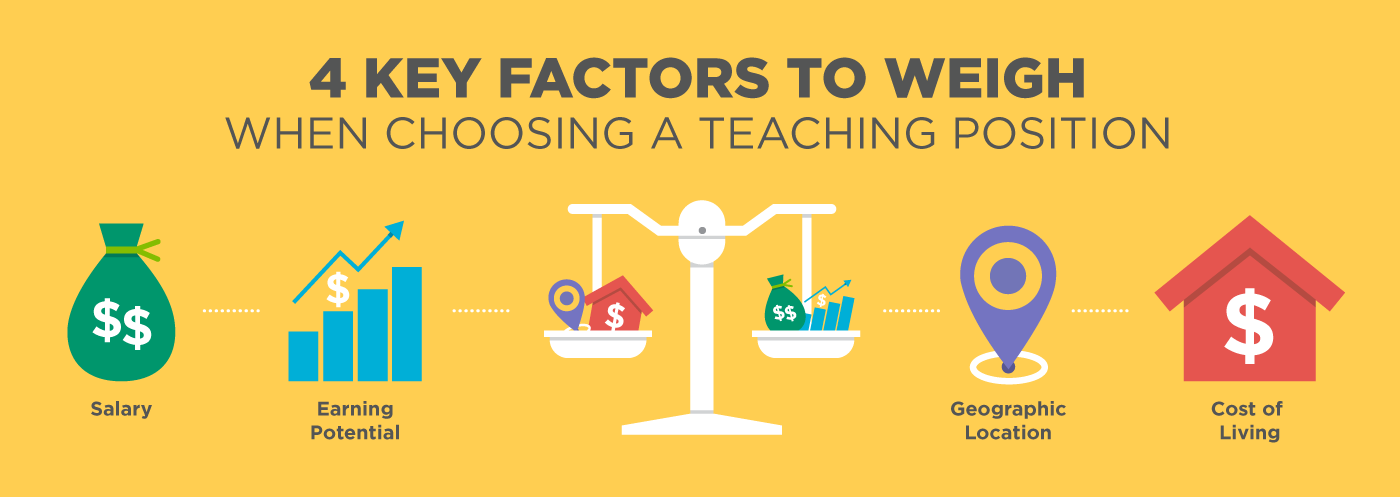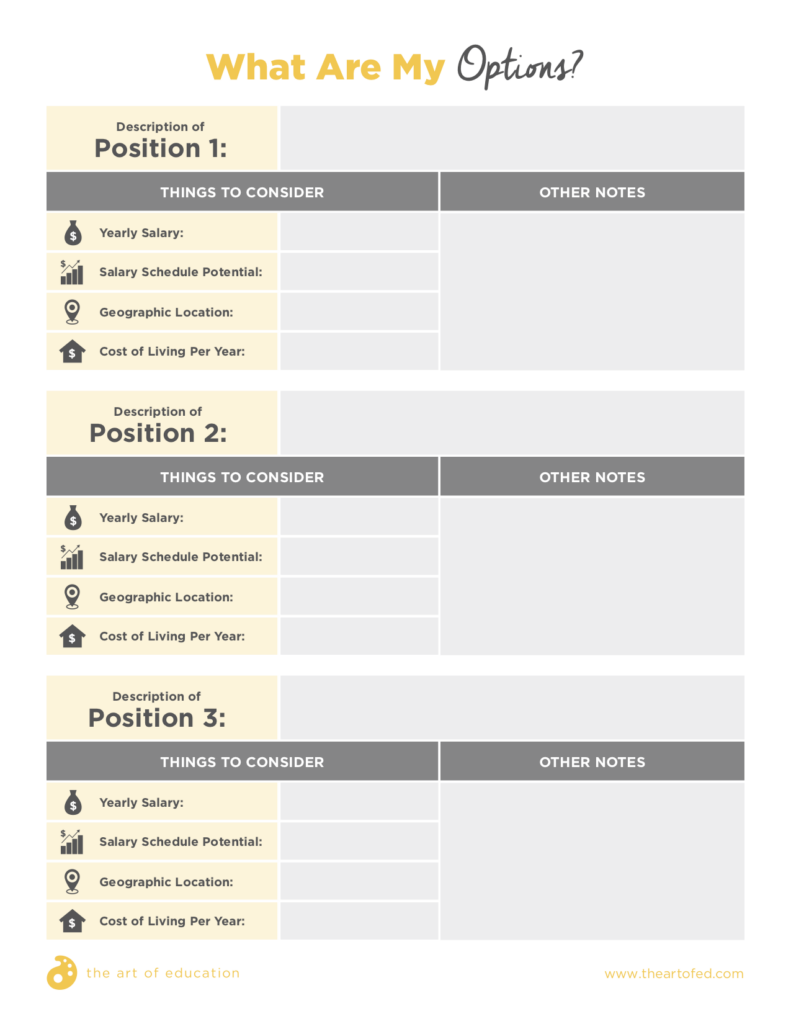It’s no secret that teachers play an integral role in their students’ lives. They help students discover new things about the world and tap into each student’s unique capabilities. We see this truth every day as we witness those “aha” moments, proving education positively impacts our students’ futures.
The fuel of those moments certainly outweighs the challenges of teaching, and it would be difficult to assign a dollar amount to the things that make teaching so rewarding. But, while we’re not usually in it for the money, it is important to consider your income to cost of living ratio. It can be both exciting and eye-opening to change locations and teach somewhere else. There is a lot to consider.
3 Things that Impact Teacher Salaries in the U.S.

1. Geographic Location
CNBC’s Abigail Hess cites data from the 2016 United States Bureau of Labor Statistics, to report that the top five paying states for teachers include Alaska, New York, Connecticut, New Jersey, and California. The lowest paying states include Oklahoma, Mississippi, South Dakota, North Carolina, and West Virginia (The 5 highest and lowest paying states for teachers in the US, 2017).
It is important to consider cost of living by state as well. According to the Missouri Economic Research and Information Center cost of living is the highest in the states of Hawaii and Alaska, followed by the states on the west coast and the states in the northeast. Are you curious how your state stacks up in comparison to neighboring states? You can search state wage estimates using the US Bureau of Labor Statistics State Occupational Employment and Wage Estimates map.

2. Salary Schedules
Another consideration is salary schedules for teachers. The Education Commission of the States (2016) provides information on statewide salary schedules, currently implemented in seventeen states. Those salary schedules dictate the minimum amounts teachers may be paid according to their individual education and years of service. While the salary schedules can be a way to create equity across districts, several states do not update the schedules regularly. Other states do not use salary schedules. Instead, they require districts to either adhere to a minimum wage or to report their average wages. Both methods promote awareness and encourage competitive wages.
3. Teaching Level
It’s obvious that teacher salaries vary greatly from state-to-state. But, what you may not know is that wages also vary by teaching level. Secondary teachers rank the highest. They are followed by elementary teachers, with pre-school teachers far below either way at the bottom. In its 2016 publication, Career Outlook: Teaching for a Living, the United States Bureau of Labor Statistics presents an overview of the teaching profession, including information on wages and employment outlook statistics by teaching level. It’s worth a look if you’re interested in learning more.
Considerations for those Teaching Abroad

If you’re up for adventure, the whole world is your oyster. Have you ever wondered what teachers earn outside the U.S.?
The Centre for Educational Research and Innovation surveyed twenty-nine countries in their Education at a Glance 2017 OECD Indicators report. It found the top paying countries in the world include Luxembourg, Ireland, Korea, Germany, (the United States), and Austria. The lowest paying countries for teachers included Columbia, Hungary, Poland, Slovak Republic, and the Czech Republic. Differences in wages abroad also depend on the teacher’s level of education and years of experience. Just like the in the U.S., secondary teachers had the highest salaries and preschool teachers had the lowest.
That isn’t to say teaching in a country that pays lower than the U.S. is without perks. Overall, teacher salaries grow at a faster rate when you teach outside of the U.S. The Education Commission (2016) estimates an increase of 32% on average over the first 15 years abroad, which is approximately 10% more than wages increase over time in the US.
Additionally, benefits abroad often include regional allowances, family allowances, tax allowances, and various teacher-discounts. All of these extras can add up and should be considered when comparing the data (Education at a Glance 2017 OECD Indicators report).
If you’re interested in reading more, the 2016 AOE series Teaching Art Around the World features the stories of six teachers working and living abroad in Norway, Thailand, Ethiopia, India, Germany, and South Korea. Each article provides an excellent picture of what it is like to live and teach in those places. In addition, the article Have You Ever Thought About Teaching Overseas? gives a general overview of important considerations.
Whether you’re interested in teaching in the U.S. or elsewhere, it pays to do your research. Find out what your income to cost of living ratio might be and take a look at the salary schedules for your districts of interest. When teaching abroad, figure out what additional perks might come with the job. Knowledge is power! Use yours to your advantage.
If you’re interested in making some comparisons of your own, you can use the handy download below!
What is your biggest consideration when it comes to applying for teaching positions in new places?
In which countries have you taught? Have you ever relocated to another state for a teaching job?
Magazine articles and podcasts are opinions of professional education contributors and do not necessarily represent the position of the Art of Education University (AOEU) or its academic offerings. Contributors use terms in the way they are most often talked about in the scope of their educational experiences.





